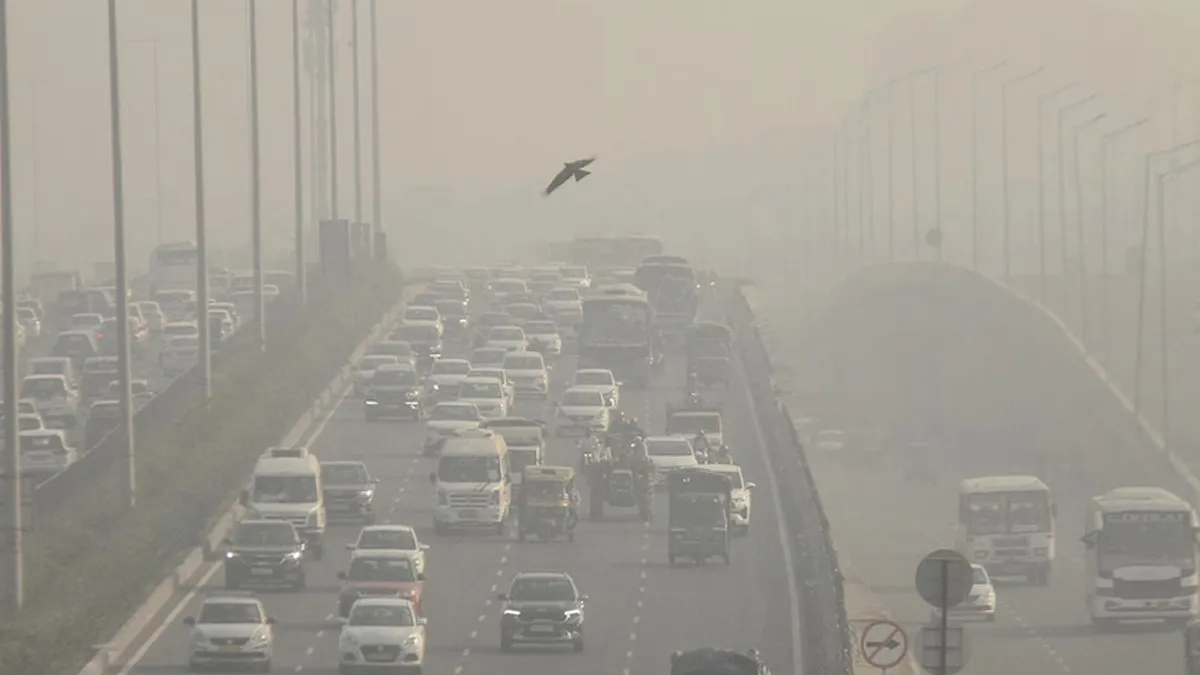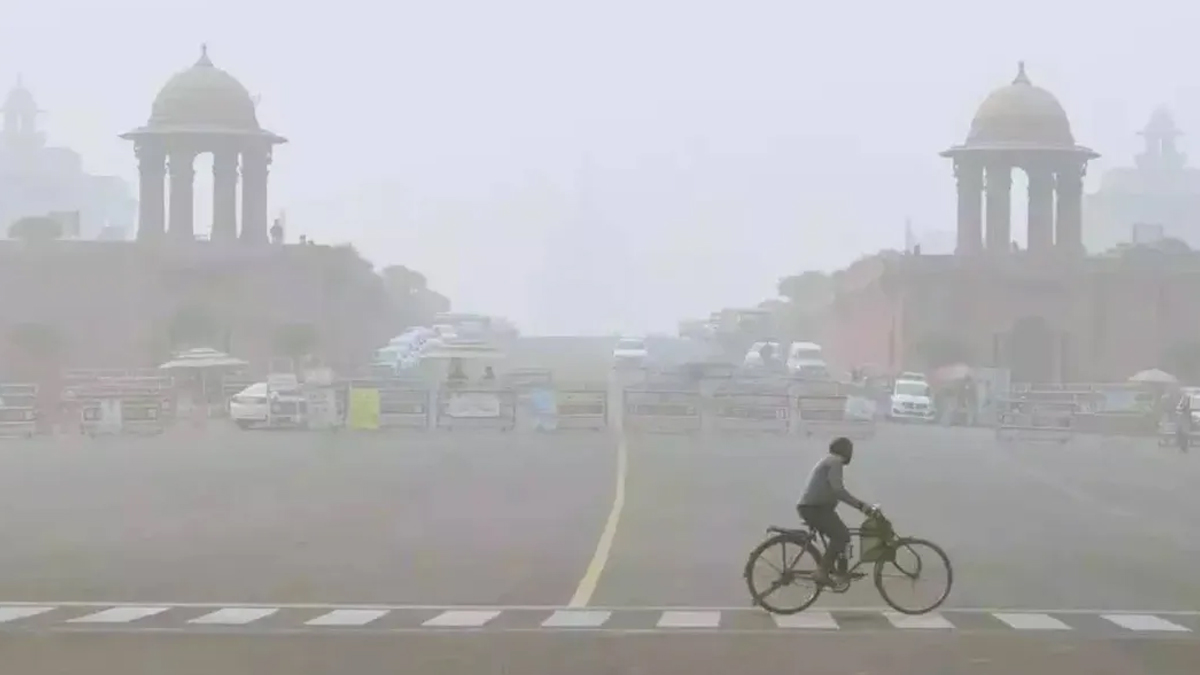
As Delhi prepares for the festive celebrations of Chhath Puja, the capital is grappling with a grave health concern: air pollution levels have escalated to dangerous levels. On Wednesday, for the fourth day in a row, the Air Quality Index (AQI) in many parts of Delhi was recorded in the "severe" category, triggering warnings from health experts about potential lung damage and other severe health risks. According to SAFAR-India’s latest data, the AQI in Delhi at 6 a.m. stood at an alarming 360, marking a critical threshold for air quality and public health.
Table of Content:-
Rising Pollution Levels Across the Capital
Several areas in Delhi are facing particularly hazardous air quality. Mundka registered an AQI of 418, NSIT Dwarka reached 449, and Wazirpur followed closely with an AQI of 421, all of which fall into the "severe" category. On November 5, AQI levels in eight locations, including Anand Vihar, Ashok Vihar, Bawana, and Vivek Vihar, were similarly dire. Anand Vihar and Ashok Vihar recorded AQIs of 398 and 397 respectively, putting them in the “very poor” zone, while other locations such as Alipur, Burari Crossing, and Punjabi Bagh reported similar pollution levels.
The AQI in Dwarka Sector 8 hit 356, Chandni Chowk 312, and IGI Airport 349, all signalling serious pollution that can impact respiratory health across all age groups. With these numbers in mind, environmental experts have raised concerns about the hazardous air quality affecting nearly every region of the city.

Understanding the AQI and Its Impact on Health
The Air Quality Index (AQI) is a critical indicator of air pollution levels, measuring pollutants like PM2.5, PM10, sulfur dioxide, carbon monoxide, nitrogen dioxide, and ozone. These pollutants, especially fine particles (PM2.5), pose severe health risks when inhaled, particularly for children, elderly individuals, and those with pre-existing respiratory conditions. In Delhi, AQI levels surpassing 300 are considered “hazardous” and are linked to respiratory and cardiovascular issues, as well as long-term lung damage. Health professionals warn that sustained exposure to such pollution can lead to chronic conditions such as asthma, bronchitis, and even reduced lung function over time.
Also Read: Delhi's Air Quality Worsens Post-Diwali: Top Detox Foods to Combat Toxic Air Effect
Causes of Severe Air Pollution in Delhi During Winter
The increase in pollution levels during winter is attributed to various factors. Vehicle emissions, industrial activities, and construction dust release a significant amount of pollutants into the air. Additionally, crop stubble burning in nearby states such as Punjab and Haryana has long contributed to Delhi’s air quality crisis. During winter, specific meteorological factors, such as lower temperatures and reduced wind speeds, trap pollutants closer to the ground, creating a thick blanket of smog over the city. This layer not only blocks sunlight but also exacerbates pollution levels, making breathing in the open air a health hazard.
How Inhaling Smog Affects the Lungs
The toxic smog blanketing Delhi is composed of harmful chemicals, including ground-level ozone, particulate matter, and volatile organic compounds (VOCs) that originate from vehicular emissions, industrial discharges, and fuel combustion. Breathing in these pollutants leads to inflammation in the airways, causing irritation, coughing, and difficulty breathing. Moreover, these particles can penetrate deep into the lungs, triggering mucus buildup, reducing airflow, and potentially leading to chronic lung conditions. Long-term exposure can even impair the lungs’ ability to fight infections, leaving individuals more susceptible to respiratory illnesses.
Also Read: Telangana Government Bans Egg-Based Mayo Amid Surge In Food Poisoning Cases
Health Risks Associated with Prolonged Exposure to Toxic Air
Inhaling toxic air has both immediate and long-term consequences for lung health. Individuals exposed to high pollution levels may experience symptoms such as a persistent cough, scratchy throat, headaches, fatigue, and eye irritation. For those with pre-existing respiratory conditions like asthma, smog can aggravate symptoms, causing frequent asthma attacks and increasing the need for medications. Continued exposure to such harmful air can ultimately result in chronic obstructive pulmonary disease (COPD), which permanently damages lung tissue and reduces respiratory efficiency.
Steps to Minimize Exposure and Protect Lung Health
With air pollution at critical levels, residents are encouraged to take precautions to minimize health risks. Staying indoors during peak pollution hours, using air purifiers, and wearing masks when venturing outside are recommended measures. Schools in Delhi have also limited outdoor activities to protect children from exposure.
Experts emphasize the importance of early detection and prompt treatment of any respiratory symptoms to mitigate potential long-term health effects. With pollution levels expected to remain high, medical professionals advise those with respiratory issues to stay alert to any signs of worsening health.
Bottomline
As Delhi continues to grapple with the severe air quality crisis, the urgency for long-term solutions has become clear. Regulatory measures, along with greater public awareness and individual efforts to reduce pollution, remain essential in addressing this public health challenge.
Also watch this video
How we keep this article up to date:
We work with experts and keep a close eye on the latest in health and wellness. Whenever there is a new research or helpful information, we update our articles with accurate and useful advice.
Current Version